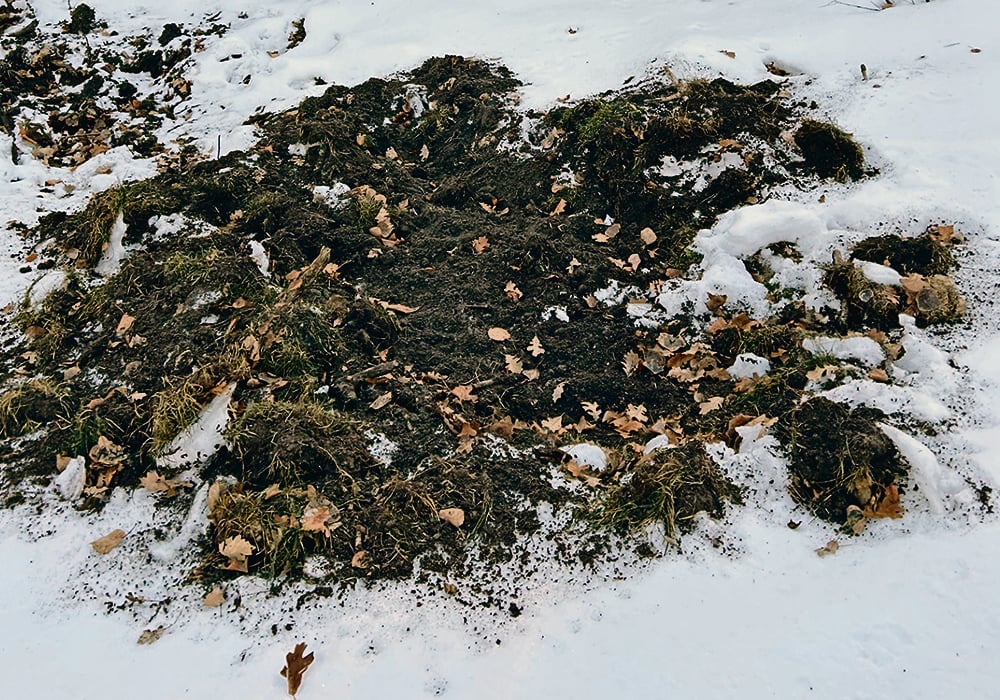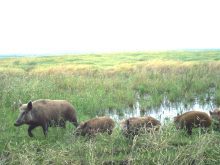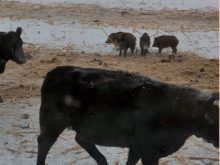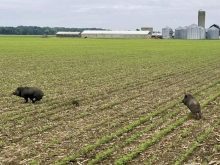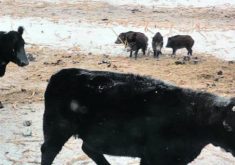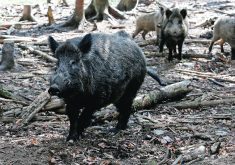This invasive species typically stays hidden during daylight hours, but there are some obvious signs they’re present
HOLLAND, Man. — You’re not likely to find them snorting, squealing, rooting and pooping in your pastures and fields. They’re far too smart for that.
Farmers wondering if wild pigs are damaging their fields will need a keen eye to spot feral porcine evidence.
As these pictures show, wild pigs like to dig in, root-up and flip over grass when they smell something yummy under the surface, such as worms.

Especially on the grassy edges of fields and pastures, near the safety of the tree line, wild pigs like to conduct excavations like these.
In wet soil, you can find their hoof prints if you look closely. The front of the hoof looks similar to deer tracks, but behind are the generally less deep twin points of the heel.
Wild pigs relish the bugs that reside beneath cow patties. They’ll flip them up and over to get at these wriggling creatures.

Wild pigs will tear into baled and broken-out hay. Don’t assume all damage is caused by deer.
Standing corn, either awaiting late harvest or left for cattle grazing, is a veritable smorgasbord for wild pigs. They’ll spend many quality hours within the rows munching out. Check for that.
You’re not likely to ever see the pigs. They keep to the woods in the daylight hours and are furtive. But they leave signs and if you can spot them, then you’ll know if you have a problem.





